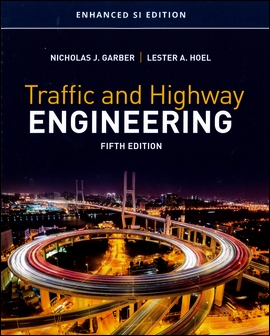書籍分類

Traffic and Highway Engineering 5/e (Enhanced SI Edition)
作者:Nicholas J. Garber , Lester A. Hoel
原價:NT$ 1,550
ISBN:9781337631044
版次:5
年份:2020
出版商:Cengage Learning
頁數/規格:1312頁/平裝單色
參考網頁:Traffic and Highway Engineering 5/e
版次:5
年份:2020
出版商:Cengage Learning
頁數/規格:1312頁/平裝單色
參考網頁:Traffic and Highway Engineering 5/e
內容介紹 本書特色 目錄 作者介紹
- Description
Gain unique insights into all facets of today's traffic and highway engineering with the enhanced edition of Garber and Hoel's best-selling TRAFFIC AND HIGHWAY ENGINEERING, SI Edition, 5th Edition. This edition initially highlights the pivotal role that transportation plays in today's society. You examine employment opportunities that transportation creates, study its historical impact and explore the influences of transportation on modern daily life. This comprehensive approach offers an accurate understanding of the field with emphasis on some of transportation's distinctive challenges. Later chapters focus on specific issues facing transportation engineers to prepare you for common obstacles you may need to overcome in the field. Worked problems, diagrams and tables, reference materials and meaningful examples clearly demonstrate how to apply the transportation engineering principles you have learned.
分類位置:
理工 > 土木工程 > 運輸工程


